Crate training a puppy is an essential step towards building a strong, trusting relationship with your new furry friend. Not only does it provide a safe space for your puppy, but it also aids in housetraining, prevents destructive behaviors, and facilitates travel. In this comprehensive guide, we’ll walk you through the entire crate training process, offering tips and tricks to make it an enjoyable experience for both you and your puppy. Let’s embark on this exciting journey to ensure a well-behaved, happy, and confident canine companion!
Short Summary
- Crate training is essential for raising a well-behaved dog and should be done gradually with positive reinforcement.
- When selecting a crate, it is important to consider size and adjustability, material and durability as well as portability and convenience.
- The do’s & don’ts of crate training include creating positive associations with the crate & avoiding punishment or rushing the process.
For more on training read our comprehensive training 101 guide.
The Importance of Crate Training
Crate training offers numerous benefits that contribute to a well-rounded and well-behaved dog. Some of these benefits include:
- Providing a tranquil and safe environment for the dog to rest and feel secure
- Especially important for young puppies, who need a safe space to call their own as they adjust to their new home
- Invaluable for housetraining purposes, as it helps establish a consistent routine and prevent accidents
Another advantage of cage training is that it simplifies travel. For instance, if your puppy is already accustomed to spending time in their crate, they’ll feel more comfortable during car rides or trips in flight kennels. Finally, crate training can help prevent destructive behaviors by providing a designated space for your puppy to chew on toys and play safely, without causing damage to your home.
With all these benefits in mind, it’s clear that crate training is a crucial part of raising a well-behaved dog. But how do you go about choosing the right crate for your puppy? Let’s dive into the factors you need to consider.
Choosing the Right Crate
Selecting the perfect crate for your puppy is a crucial step in the crate training process. The right cage not only provides comfort and security, but it also sets the stage for successful housetraining and prevents destructive behaviors.
In the following sections, we’ll explore the factors you need to consider when choosing a crate, including size and adjustability, material and durability, and portability and convenience.
Size and Adjustability
One of the most important factors to consider when selecting a crate for your puppy is its size. The crate should be large enough for your puppy to stand up and rotate in it comfortably, allowing them to feel secure and cozy. However, be cautious when choosing an oversized crate, as it can hinder the potty-training process by providing the puppy with enough space to eliminate in one end of the crate while remaining dry in the other.
Adjustable crates are an excellent option for growing puppies. These crates come with a divider, allowing you to customize the interior space according to your puppy’s size and needs. As your puppy grows, you can simply adjust the divider to provide more space, ensuring a perfect fit throughout their development.
Another option to consider is leasing a crate, which allows you to exchange up to the suitable size for your puppy until they reach their mature size. This cost-effective solution ensures that your growing puppy always has the appropriate crate size, making the crate training process smoother and more effective.
Material and Durability
Choosing a crate made from sturdy materials is essential, as puppies can be quite destructive, and a weak or flimsy crate may not withstand their antics. Metal is the most suitable material for a puppy crate, offering sturdiness and durability, making it an ideal choice for puppies who may have a tendency to chew on other materials.
In addition to metal crates, you may also consider crates made from plastic, wood, or fabric. However, it’s important to keep in mind the potential drawbacks of these materials, such as reduced durability or the potential to be chewed through by a determined puppy.
When selecting a crate, ensure that it has the following features:
- Made from high-quality materials
- Rounded edges
- Multiple points of access
- Ease of cleaning
A durable and well-constructed dog’s crate will not only keep your puppy safe, but also make the crate training process much easier and more effective when you crate train a puppy.
Portability and Convenience
Crate portability and convenience are important factors to consider, especially if you plan on traveling with your puppy or relocating. A portable crate should be easy to transport and set up, allowing you to crate your dog briefly during trips or when moving to a new home.
When selecting a crate for travel or relocation purposes, consider collapsible dog crates, which are highly versatile and can be conveniently folded up for transport.
By choosing a crate that is both portable and convenient, you can ensure that your pet parents’ puppy has a familiar and comfortable space, no matter where your adventures take you. This can help reduce stress and anxiety for both you and your furry friend, making the cage training process even more successful.
Introducing Your Puppy to the Crate
Introducing your puppy to their new crate should be a gradual and positive experience. It’s important to create a positive association with the cage, helping your puppy feel comfortable and secure in their new space.
In the following sections, we’ll discuss how to make the crate comfortable for your puppy and how to use positive reinforcement to encourage them to enter and enjoy their crate.
Making the Crate Comfortable
To make your puppy’s crate comfortable, start by placing it in a central location where your family spends most of their time, such as a family room or living room. This will help your puppy feel included and secure, knowing they are close to their human family.
Next, add soft bedding, such as a blanket or a cushion, to the cage. This will provide your puppy with a comfortable and cozy space to relax and sleep. You can also add a favorite toy or an item with your scent to help your puppy feel more at ease.
Finally, leave the crate door open, allowing your puppy to explore the crate at their own pace. This will help your puppy build a positive association with the cage as a safe and inviting space, making the crate training process smoother and more enjoyable.
Positive Reinforcement
Positive reinforcement is a key component of successful cage training. By using treats, toys, and praise, you can create a positive association with the cage, encouraging your puppy to enter and enjoy their new space. Start by tossing small food treats or a fun toy into the crate, allowing your puppy to explore and retrieve the reward at their own pace. As your puppy becomes more comfortable entering the crate, continue to tossing treats further inside, ultimately leading them to fully enter the crate.
Consider introducing the command “crate” as they go in. The next game you can play to to reward them with a treat when the voluntarily enter the crate.
Remember to be patient and consistent in your use of positive reinforcement. While it may take time for your puppy to become comfortable with their new crate, your persistence and encouragement will pay off in the long run, ultimately resulting in a well-adjusted and crate-trained dog.
Gradual Crate Training Process
The gradual crate training process is essential for helping your puppy adjust to their new crate and learn to associate it with positive experiences. In the following sections, we’ll discuss feeding meals in the cage, closing the door and building duration, and leaving the puppy alone in the cage.
Feeding meals in the cage is a great way to start the cage training process. Start by saying it.
Feeding Meals in the Crate
Feeding your puppy their meals in the cage is an excellent way to create a positive association between the cage and enjoyable experiences. Here’s how to do it:
- Begin by placing their food bowl just inside the crate, allowing your puppy to eat without fully entering the crate.
- As your puppy becomes more comfortable, gradually move the food bowl further inside the crate.
- Continue this process until your puppy is comfortable consuming their meal within the enclosure.
In addition to regular meals, you can also provide your puppy with special treats or interactive toys that are only given in the crate. This will make the cage an even more appealing and exciting place for your dog.
By consistently feeding your puppy in the crate and providing special treats or toys, you can help them build a strong, positive association with the crate, making crate training a more enjoyable and successful experience.
Closing the Door and Building Duration
As your puppy becomes more comfortable with their crate, you can begin to work on closing the door and building duration. It is a good idea to provide your puppy with their FAVORITE treat or toy while working this step. Start by closing the door for just a few seconds, gradually increasing the time as your puppy’s comfort level allows.
It’s important to monitor your puppy’s comfort level while increasing the time they spend in the cage with the door closed. Encourage them to sit quietly, and if your puppy shows signs of stress or discomfort, take a step back and reduce the duration, working at a slower pace until they are comfortable.
Remember that patience and consistency are key when it comes to building duration in the cage. By working at a pace that suits your puppy’s needs and comfort level, you can help ensure a positive and successful crate training experience.
Leaving the Puppy Alone in the Crate
Once your puppy is comfortable with the cage and can remain calm with the door closed for short periods, you can begin to practice leaving them alone in the cage while you are home. Start by leaving your puppy in the cage for just a few minutes, gradually increasing the duration as they become more comfortable. Gradual is the key word here!
It’s important to work on this step while you are still at home, as it helps your puppy learn to feel secure and relaxed in the crate even when you are not present. This can help prevent separation anxiety and other potential issues down the line.
By practicing leaving your puppy alone in the crate for short periods while you are home, you can help them build confidence and comfort in their new space, ultimately making the crate training process more successful and enjoyable for both of you.
Frequency and Duration
A common question is how long does crate training take? It depends on several considerations like age of puppy, frequency of training, dog’s personality, but if you are following the steps above and practicing each step several times a day, then you can expect your pup to be fully comfortable in their crate in about two weeks. It is important not to rush the process because you might create counter productive negative associations with the crate.
Nighttime Crate Training
Nighttime crate training is an important aspect of the overall crate training process. To begin, place the crate near your bed for the first few nights or weeks, allowing your puppy to feel secure and close to you while they adjust to their new sleeping environment. Monitor your puppy’s comfort level and respond to any needs they may have, such as needing a potty break during the night.
Once your puppy is comfortable spending the night in its crate, start shaking it slowly to its final destination. Eventually, it will be happily settled into its forever place inside your home. This transition should be done slowly, allowing your puppy to adjust to the new location without feeling anxious or stressed.
By following these nighttime crate training tips, you can help your puppy establish a consistent bedtime routine, feel secure in their crate at night, and ensure a smooth and successful crate training process.
Troubleshooting Common Crate Training Issues
Crate training is not without its challenges, and it’s normal to encounter some common issues along the way. In the following sections, we’ll discuss how to address whining, manage separation anxiety, and handle accidents in the crate, ensuring you have the tools and knowledge needed to overcome these hurdles and successfully crate train your puppy.
Whining is a common issue when crate training a puppy. To address this, it’s important.
Addressing Whining
Whining is a common issue during cage training, and it’s important to address it appropriately to prevent reinforcing attention-seeking behavior. If your puppy whines in the cage, it’s crucial to ignore the whining unless it signals a need to eliminate. By not responding to whining, you can help your puppy learn that whining will not result in attention or rewards.
To determine the source of the whining, observe your puppy’s behavior and look for patterns that could explain their whining. If you believe the whining is due to a need to eliminate, calmly take your puppy outside without engaging in playtime or affection.
If the issue of whining becomes unmanageable, consider revisiting the crate training steps and working more slowly to build your puppy’s comfort level in the crate. Patience and consistency are key to addressing whining and ensuring a successful cage training experience.
Managing Separation Anxiety
Separation anxiety can be a challenging issue to address during cage training. If your puppy displays signs of separation anxiety, it’s important to consult a specialist and adjust crate training accordingly. Techniques such as counterconditioning and desensitization can be helpful in addressing separation anxiety and helping your puppy feel more comfortable in the crate.
When working with a puppy who has separation anxiety, it’s crucial to be patient and understanding. Recognize that your puppy may require more time to adjust to crate training and work at a pace that suits their needs and comfort level.
By addressing separation anxiety with patience and the appropriate techniques, you can help your puppy overcome their anxiety and successfully crate train, ensuring a happier and more secure canine companion.
Handling Accidents in the Crate
Accidents in the cage can be frustrating, but it’s important to handle them appropriately to ensure a successful crate training process. If your puppy has an accident in the cage, clean the area with an enzymatic cleaner, which helps to break down the odor-causing bacteria and prevent further accidents. Avoid using ammonia-based products, as they can encourage your puppy to continue soiling the cage.
It’s normal for puppies to have accidents in the cage during the initial days or weeks of crate training. Be patient and understanding, recognizing that accidents are a normal part of the learning process.
By handling accidents in the cage calmly and effectively, you can help your puppy learn proper elimination habits and ensure a smoother and more successful crate training experience.
Crate Training and Potty Training
Once your pup is used to their crate, you can begin to use it as a potty training tool! Dogs are instinctually sanitary animals. They will not naturally mess in their den. Once your pup is comfortable in their crate, owners should take them immediately to relieve themselves outside or in a designated area. This builds a routine and association with relieving in the proper location. It is important to ensure you are taking their bladder hold times into consideration.
Crate Training Tips for Older Dogs
Crate training an older dog may require additional patience and understanding, as they may take more time to adjust to the crate training process. However, with the right approach and the use of positive reinforcement, crate training an older dog can be successful and beneficial. Begin by gradually introducing your older dog to the crate, using the same techniques as you would with a puppy, such as tossing treats or toys into the crate to create a positive association. Be patient and work at a pace that suits your older dog’s comfort and needs.
As with puppies and adult dogs, consistency and patience are key when crate training an older dog. By taking the time to create a positive association with the crate and gradually increasing crate time, you can help your older dog adjust to the crate training process and enjoy the benefits of a well-trained, crate-savvy canine companion, even if it feels like it’s been a dog’s age since they were last trained.
The Do’s and Don’ts of Crate Training
Crate training can be a rewarding and beneficial experience for both you and your dog when done correctly. To ensure success, it’s important to follow the do’s and don’ts of cage training. Do create a positive association with the cage by using treats, toys, and praise. Gradually increase crate time, and monitor your puppy’s comfort level throughout the process. To effectively crate train your dog, patience and consistency are key.
Don’t use the cage as punishment or rush the training process, as this can lead to stress and anxiety for your puppy and hinder the overall success of puppy crate training. By adhering to these guidelines and maintaining patience and consistency, you can help your puppy develop a strong, positive relationship with their crate, setting the stage for a lifetime of successful crate training and a happy, well-adjusted canine companion.
Summary
In conclusion, cage training is an essential step towards raising a well-behaved and confident canine companion. With patience, consistency, and a focus on creating a positive association with the cage, you can successfully crate train your puppy or older dog. Embrace the journey and enjoy the many benefits that come with a cage-savvy pup, from easier housetraining and travel to a happier, more secure pet.
Frequently Asked Questions
Is it OK to let puppy cry in crate at night?
It is best to remove the puppy from the cage and re-introduce it in a way that does not cause unpleasant feelings, as our goal should be for puppies to feel relaxed and comfortable. Thus, letting them cry in the cage at night is not ideal.
How do I get my puppy to stop crying in his crate?
To get your puppy to stop crying in his cage, ignore the behavior and ensure that your pup is getting plenty of exercise and attention outside of the cage. Make it cozy, comfortable, and inviting inside the cage and provide activities and distractions. Don’t use the cage as a form of punishment.
Where should a puppy sleep the first night?
For the first night, place your puppy’s crate in your bedroom for a sense of comfort. Line the base with blankets and drape another over the top for extra security.
Provide a stuffed toy that has its littermates’ scent to provide even more reassurance.
Can I leave my 8 week old puppy in a crate?
Due to their lack of bladder control, it is not advisable to leave an 8-week old puppy in a crate for more than 2-3 hours at a time.
It is important to give them plenty of opportunities to go outside.
How do I choose the right crate for my puppy?
Choose the crate that best suits your puppy’s size and needs; take into consideration factors such as adjustability, material, durability, and portability.
Adjustability is important for a growing puppy, so look for crates that can be adjusted to fit your pup as they grow. Materials should be sturdy and durable, and portability should be considered if you plan to take your pup on trips.


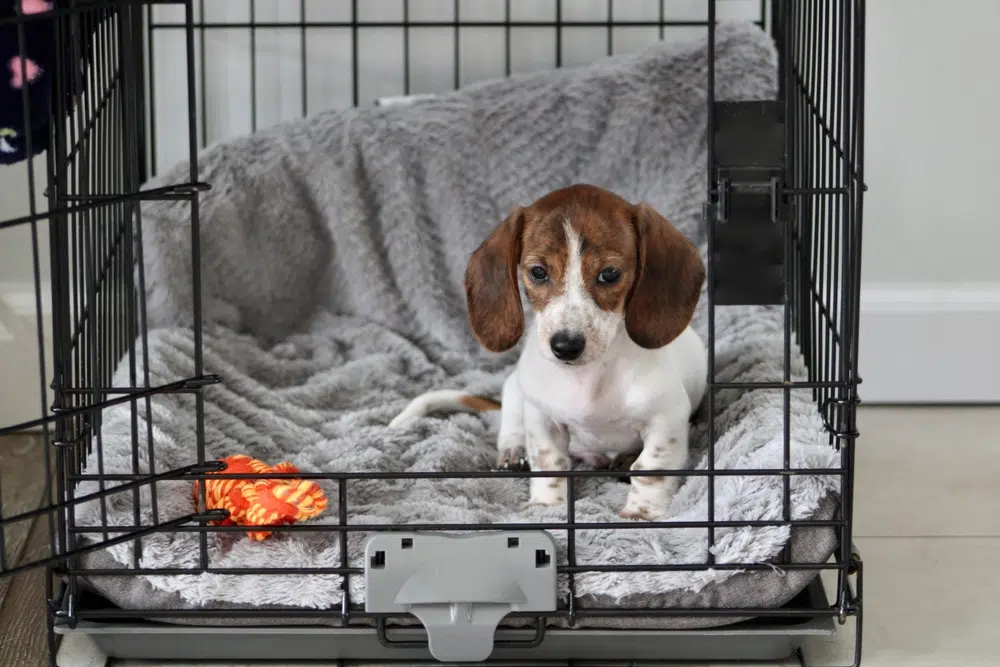
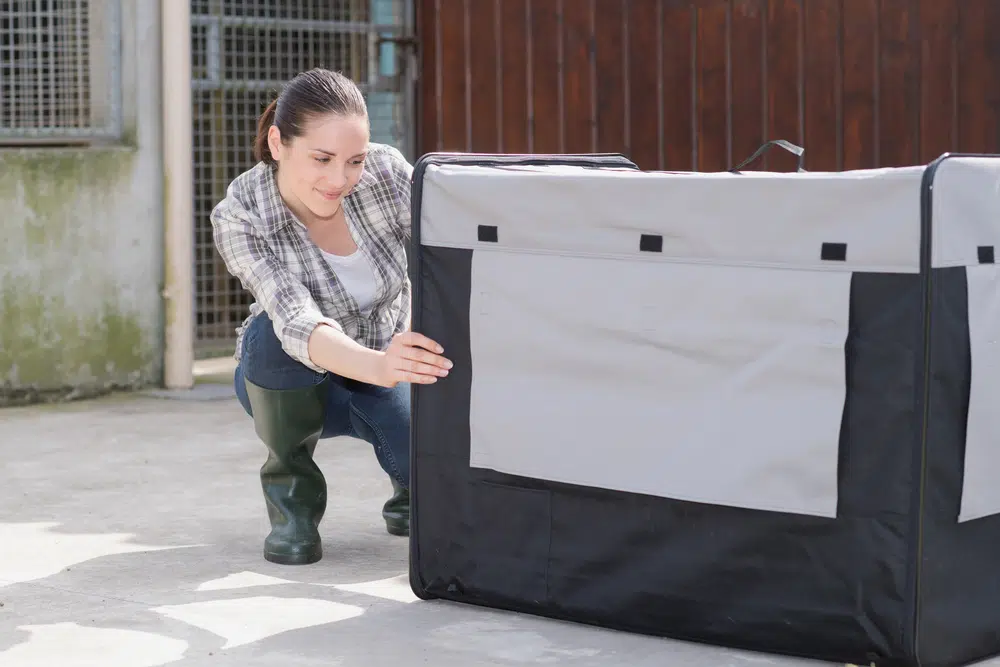
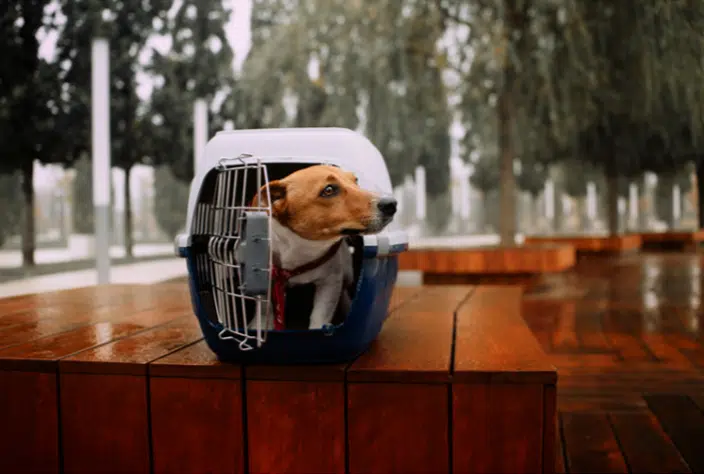
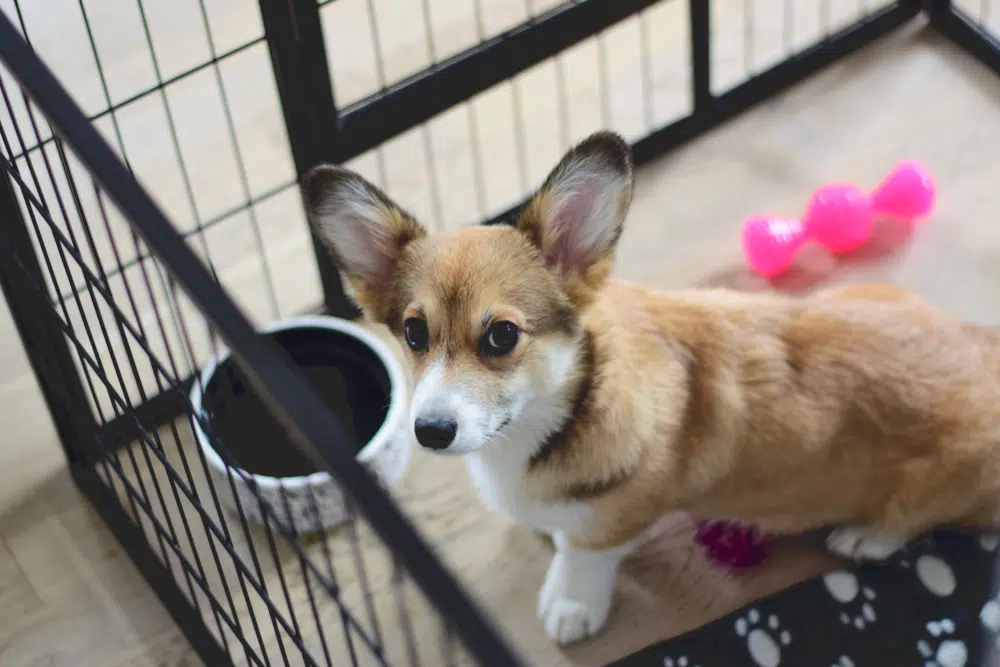

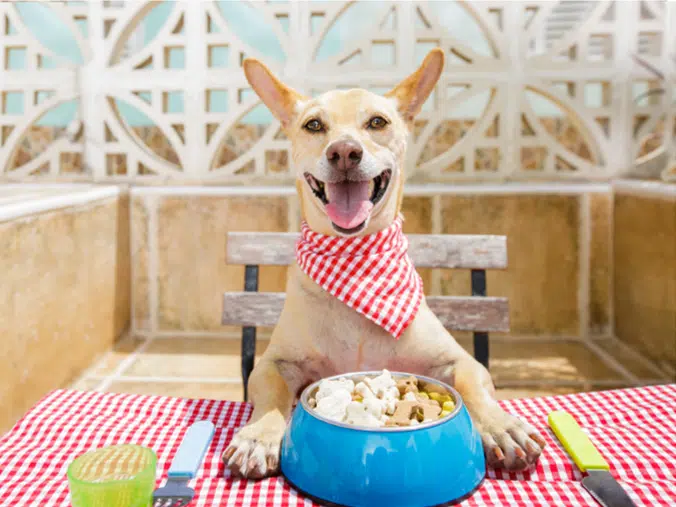

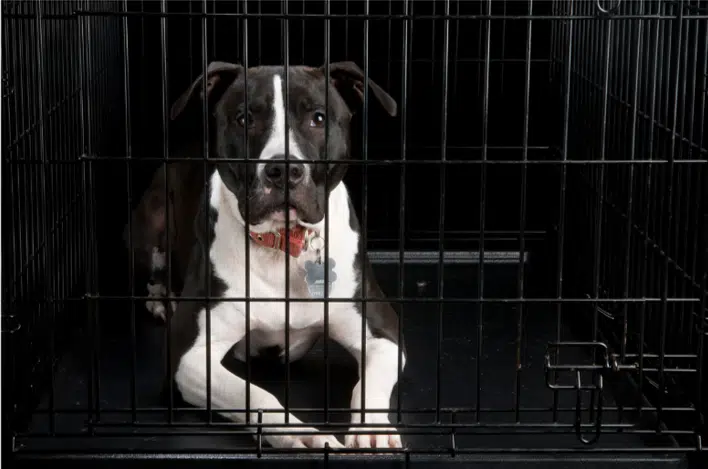
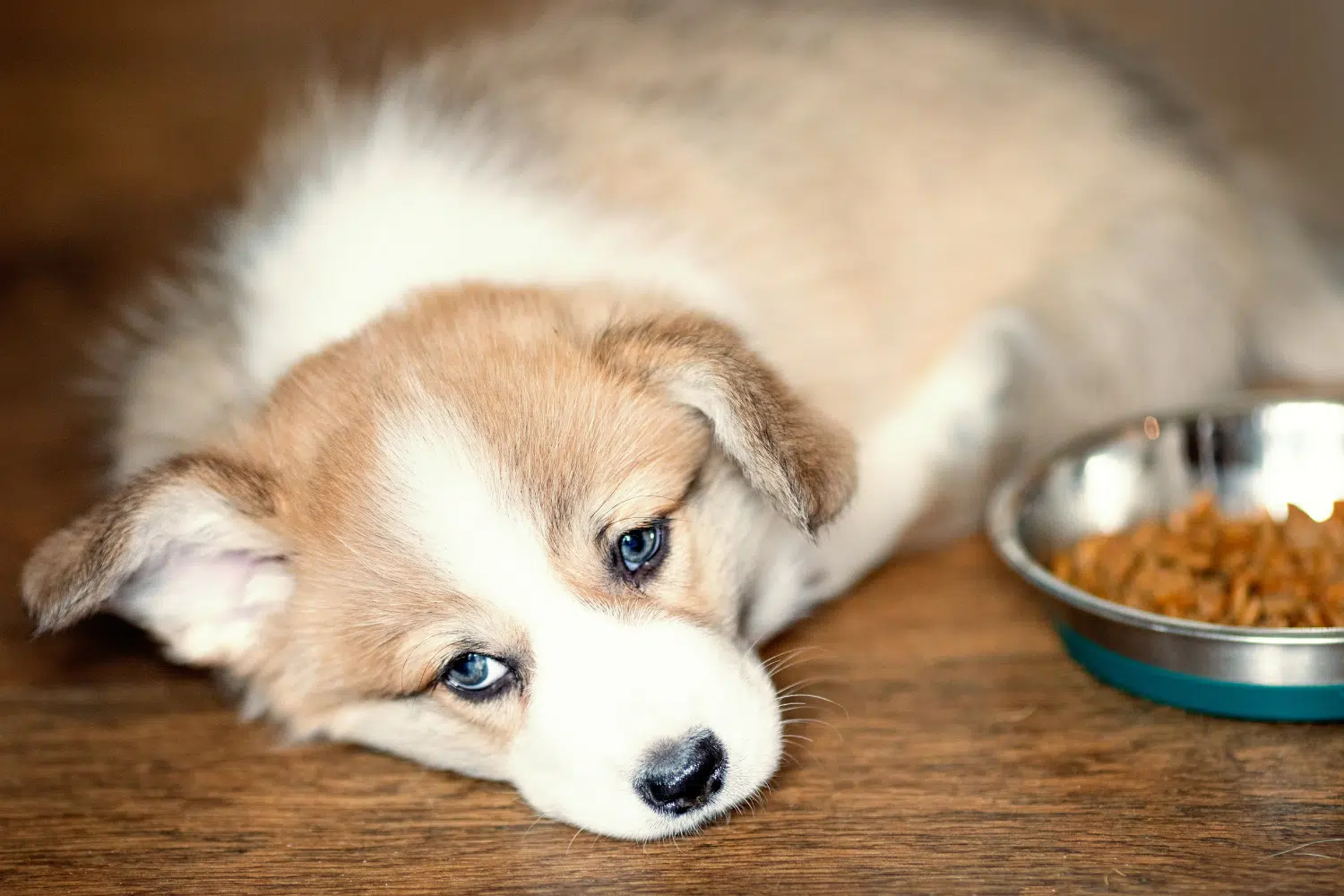
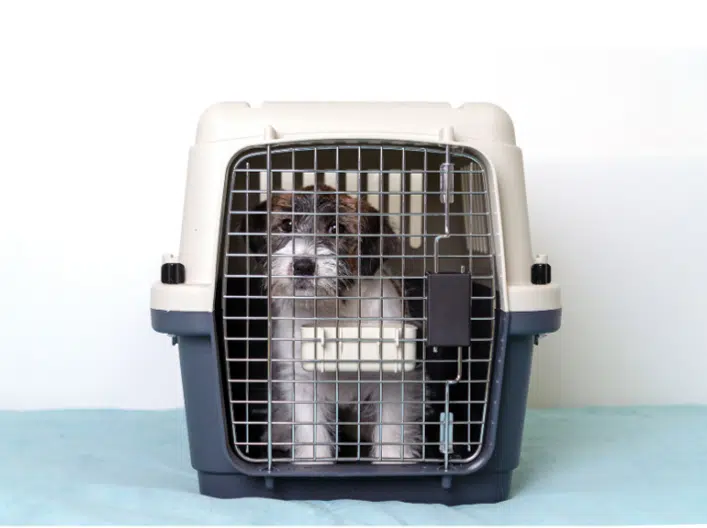
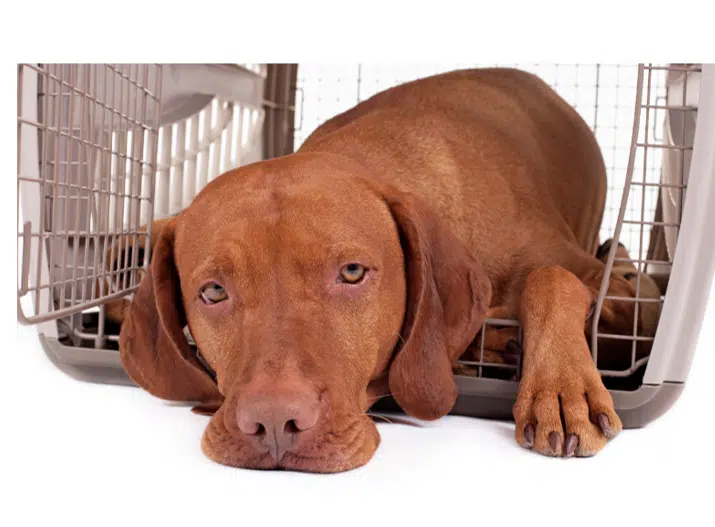
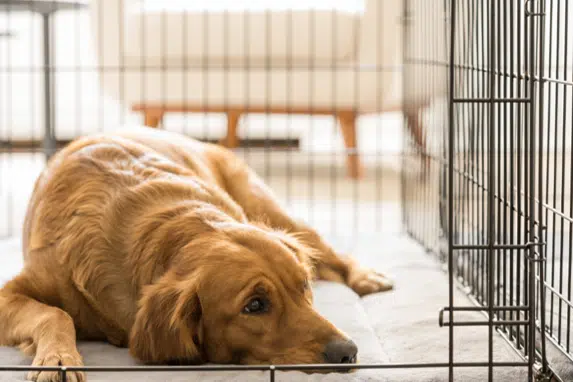

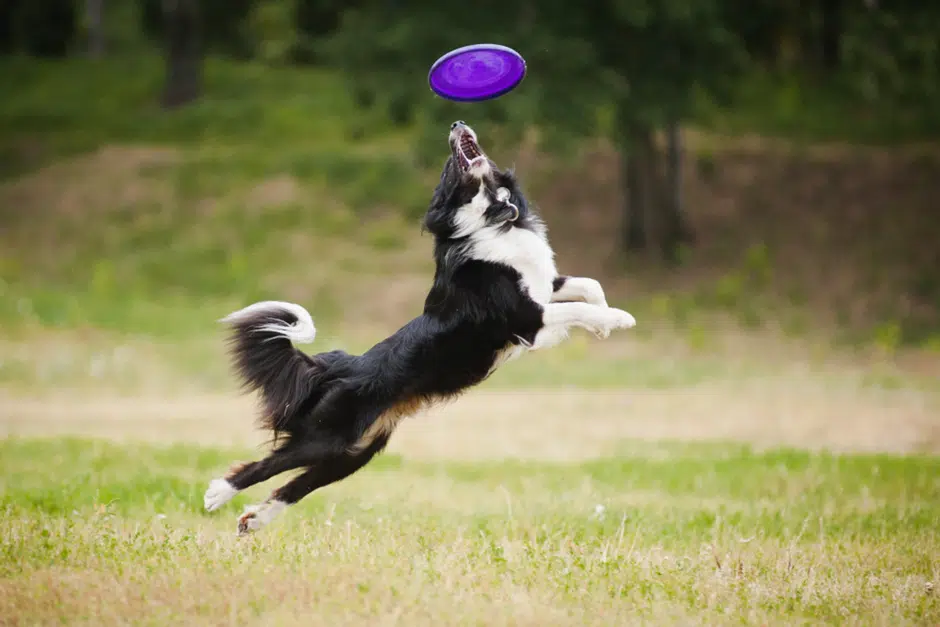
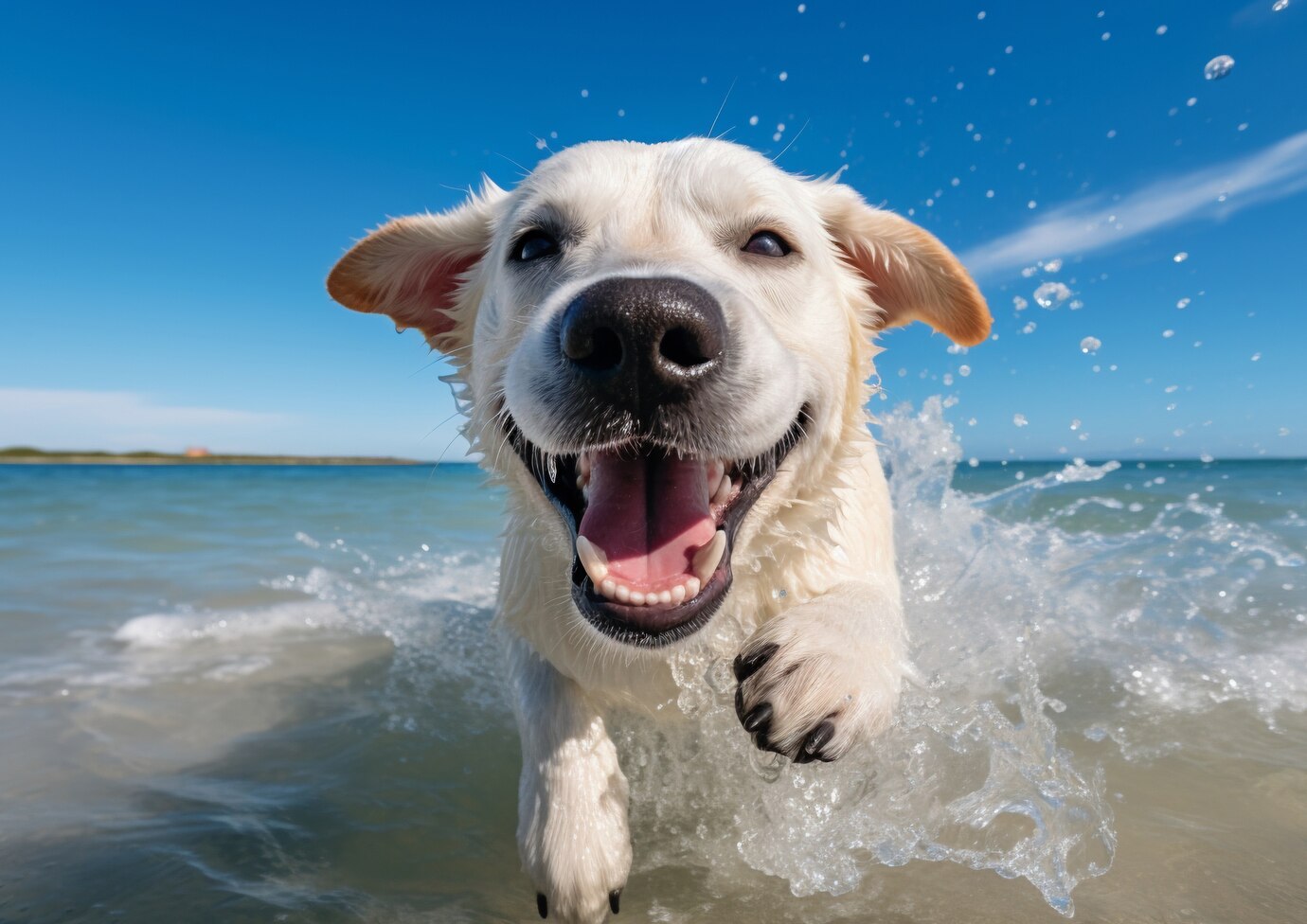



Get involved!
Comments